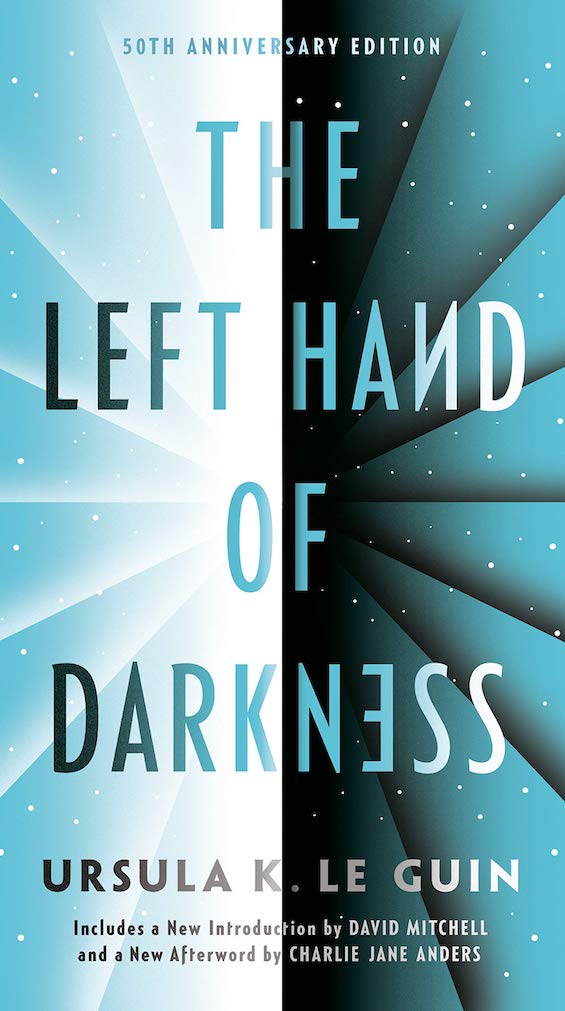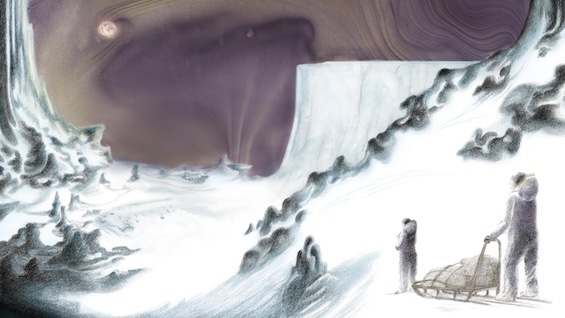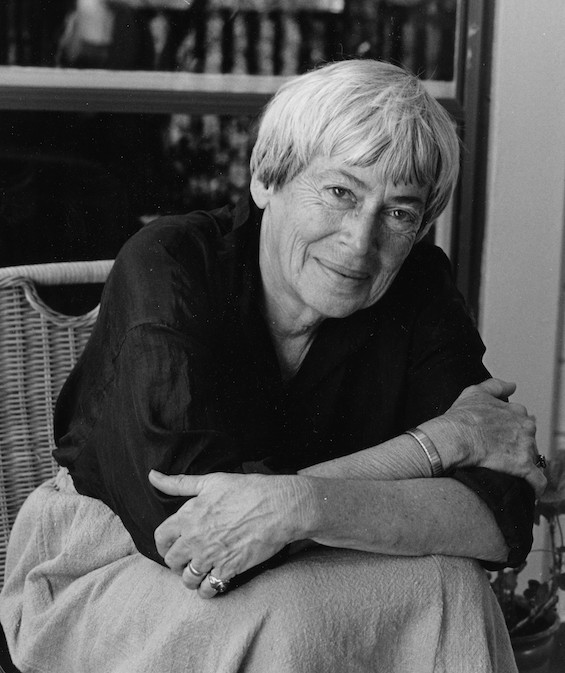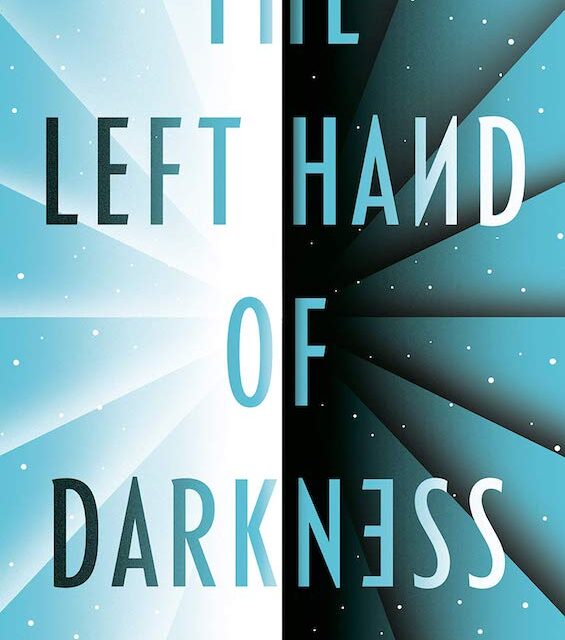
When the names of the great science fiction writers of the past are mentioned, the list invariably includes Isaac Asimov, Robert A. Heinlein, and Arthur C. Clarke. Often, it stops there. Of course, they were the first of the lot to gain widespread popularity during the field’s Golden Age, and their names are attached to some of the works now considered classics in the genre. But Ursula Le Guin, whose first book was published in 1968, two decades after the famous trio launched their careers, was a far better writer than any of them. And she proves that in her classic gender-bending novel, The Left Hand of Darkness.
Le Guin’s work is characterized by elegant prose and is both thoughtful and deeply felt. She won numerous awards to prove her popularity and her acceptance both by science fiction fans and by her fellow professionals. Twice, novels she wrote garnered both the Hugo and Nebula Awards, the top prizes in the field. The Left Hand of Darkness was the first of those, and it may be the best of her work.
An odyssey through a wintry world filled with perils
Genly Ai is an Envoy from the Ekumen, a loose association of eighty-three planets settled by humans originating from the planet Hain beginning tens of thousands of years ago. (Earth had been settled a mere 10,000 years in the past.) He arrives alone, as planned, to persuade the leaders of an isolated world known to him as Winter to join the Ekumen. There, in the space of three years, he becomes embroiled in the dangerous politics of first one nation, then another. In the company of a disgraced politician he doesn’t trust, Genly treks for months on end through the icy wastes of the world. His life is at stake both from the elements and from many of the people he meets.
A fully realized fictional world
Winter, called Gethen by its people, is one of the most fully realized fictional worlds in all of science fiction. It is difficult to read this novel without shivering at the intense cold projecting from Le Guin’s descriptions of the weather and the terrain. But what sets Gethen apart from all the planets of the Ekumen is the androgynous sexuality of its people. This is, above all, a gender-bending novel.
The people of Gethen are neither male nor female but manifest characteristics of both. Once every month, they experience kemmer, taking on the physical form of one gender or the other. In kemmer, they seek out a sexual partner. The “female” of the couple may give birth but afterwards return to “her” androgynous identity. Thus, we understand when we read that “The King is pregnant.” And this explains how Genly is considered a “Pervert” for always being in kemmer.
The Left Hand of Darkness (Hainish Cycle #4 of 8) by Ursula K. Le Guin (1969) 286 pages ★★★★☆
Winner of the 1970 Hugo and Nebula Awards for Best Novel

Two characters at the heart of the drama
The relationship between Genly Ai and the person he knows as Estraven is at the story’s core. Estraven, whose full name is Therem Harth rem ir Estraven, serves as prime minister of the kingdom of Karhide when Genly lands there. The official takes him under his wing and seeks to persuade King Argaven XV to receive him. But Estraven’s efforts run afoul of a rival, who gains the king’s ear and persuades him to exile Estraven and reject Genly’s invitation to join the Ekumen. (By way of explanation, we learn that “the king of Karhide is not only insane but rather stupid.”) And the situation is further complicated by Genly’s sexism. He tends to look on the people of Gethen as “soft” and “weak” like women, which causes him to misread their strength.
Placed in peril by the king’s declaration that Estraven is a traitor, both he and Genly leave the kingdom on separate paths, each in hopes of having better luck in the neighboring nation of Orgoreyn. There, under cloudy circumstances, they reunite.
Genly’s prospects in Orgoreyn at first look more promising. The country is a fascist state under the control of The Thirty-Three, a council riven by factions. They are welcomed warmly. But Genly and Estraven have fallen in with one of the minority factions—and that is their downfall. Enemies in the dominant faction and the secret police send Genly to a distant prison camp and force Estraven to flee. And what follows is their most daunting adventure yet.
About the title
Estraven recalls a poem from a letter his brother had sent him shortly before his death. “Light is the left hand of darkness, and darkness the right hand of light. Two are one, life and death, lying together like lovers in kemmer, like hands joined together, and like the end and the way.” Duality is an abiding theme in the novel.
Insightful comments about the 50th anniversary edition
The fiftieth anniversary edition of this gender-bending novel is bookended by insightful commentaries from two bestselling contemporary authors. David Mitchell, the author of Cloud Atlas and other award-winning novels, leads with an introduction. Fantasy author Charlie Jane Anders closes the book with an afterword.
Mitchell characterizes the novel as a thought experiment to explore how society might change “if gender was not fixed but serially mutable?” But he identifies only one big difference: the absence of rape. A second one leaps out of the page at the reader: the lack of war. However, Gethen’s harsh climate may as easily explain this.
Anders, who identifies as transsexual, brings a special perspective to this gender-bending novel. “What makes Gethen’s ambisexual world so striking and memorable,” she writes, “is the care Le Guin takes to show how the existence of kemmer changes every other part of the society. We read folktales about star-crossed kemmering, hear about the public hemmer-houses where people can mate freely, and also learn that people must live in big enough communities that there are enough possible pairings for people who are kemmering.”
About the author

Ursula K. Le Guin (1929-2018) won eight Hugos, six Nebulas, and twenty-two Locus Awards, and in 2003 became the second woman honored as a Grand Master of the Science Fiction and Fantasy Writers of America. In a literary career spanning fifty years (1968-2018), she wrote scores of novels, collections of short stories and poems, children’s books, and essays. She was born in Berkeley, California, the daughter of famed University of California anthropologist Alfred Kroeber. The insights of anthropology informed much of her fiction.
For more reading
I’ve also reviewed The Dispossessed (Hainish Cycle #6 of 8) by Ursula K. Le Guin (Ursula Le Guin explores anarchism and capitalism). Like The Left Hand of Darkness, the later novel won both the Hugo and the Nebula.
For more good reading, check out:
- The ultimate guide to the all-time best science fiction novels
- 10 top science fiction novels (plus lots of runners-up)
- The five best First Contact novels
- Seven new science fiction authors worth reading
- The top 10 dystopian novels reviewed here
And you can always find my most popular reviews, and the most recent ones, plus a guide to this whole site, on the Home Page.


























